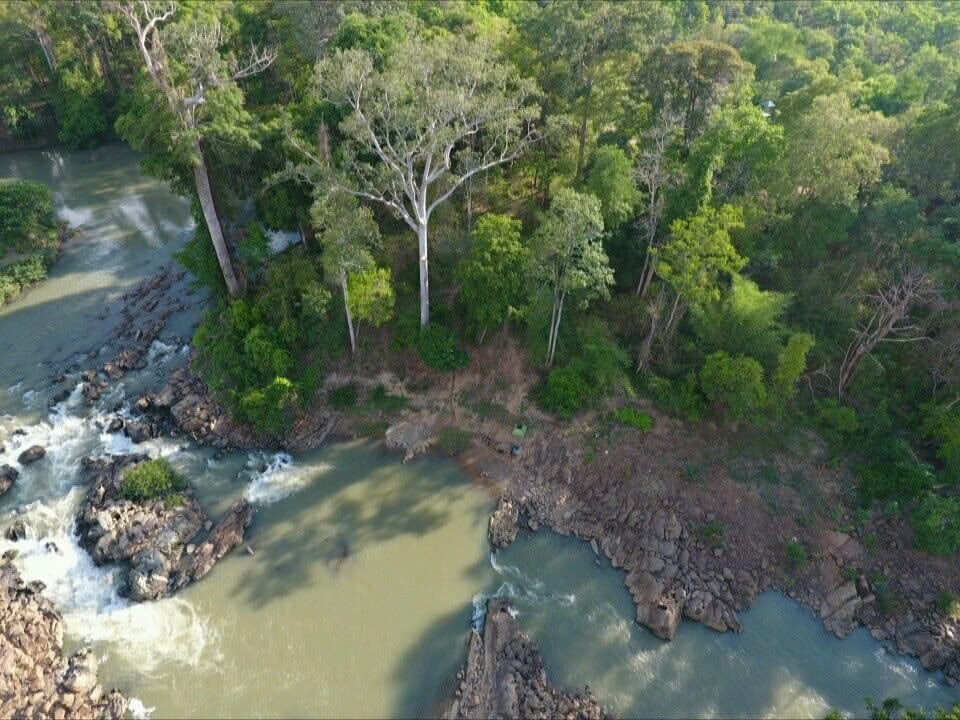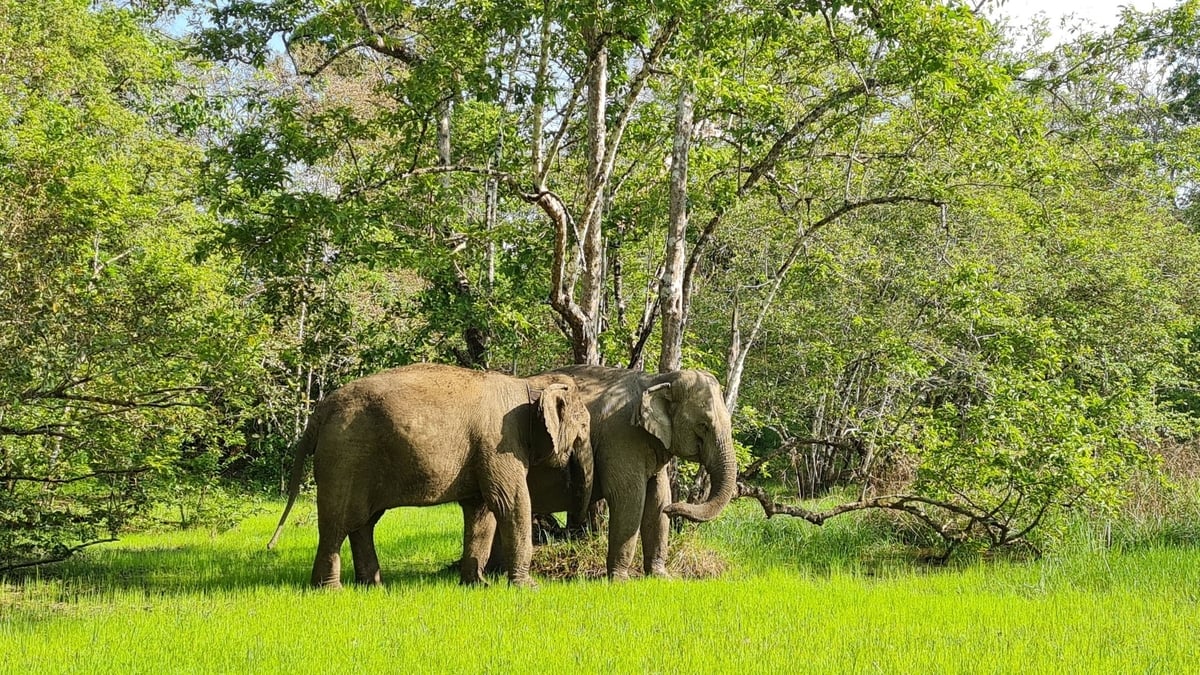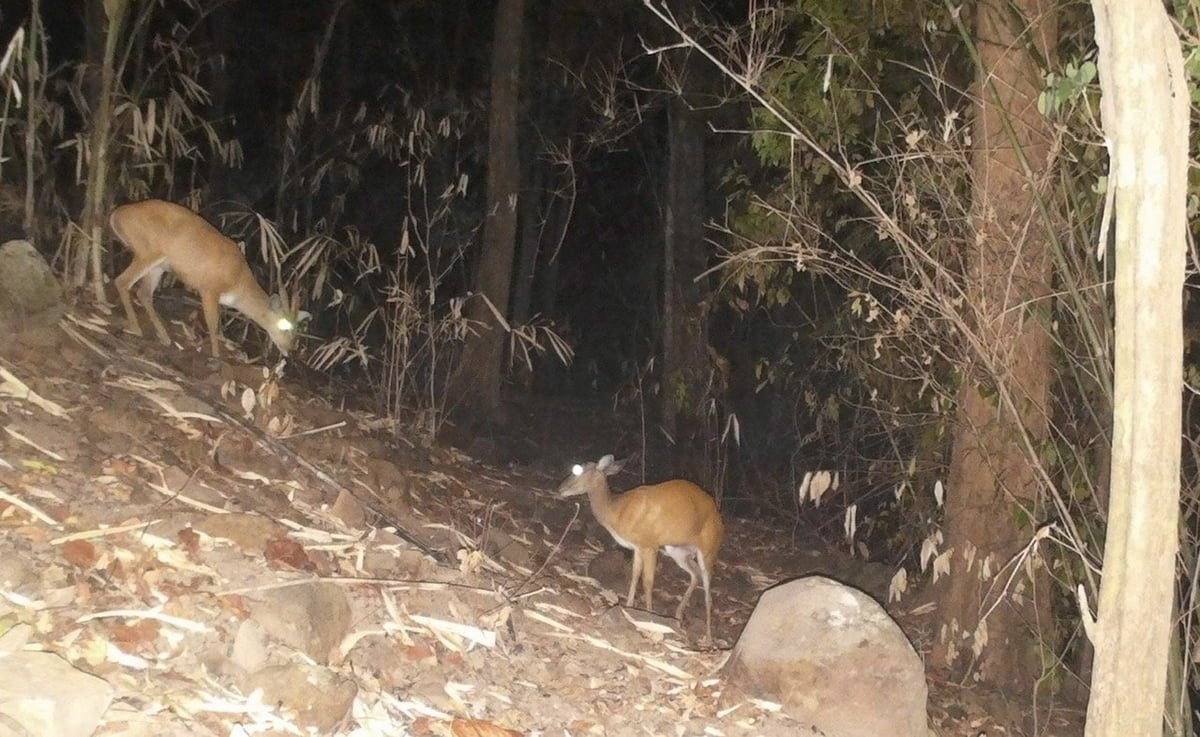December 1, 2025 | 09:27 GMT +7
December 1, 2025 | 09:27 GMT +7
Hotline: 0913.378.918
December 1, 2025 | 09:27 GMT +7
Hotline: 0913.378.918
Located in the Central Highlands of Vietnam, Yok Don National Park lies on relatively flat terrain, gradually sloping from south to north and from east to west. The park is situated in a tropical monsoon climate zone, with high annual rainfall ranging from 1,700 to 1,800 mm.
In recent years, with strong leadership from the park’s management and ongoing collaboration and investment support from non-governmental organizations, particularly WWF-Vietnam, biodiversity research and monitoring, especially of forest wildlife, has remained a top priority.

Yok Don National Park lies on relatively flat terrain that slopes gently from south to north and east to west.
Wildlife monitoring activities at Yok Don National Park have been increasingly aligned with conservation demands, with an emphasis on integrating scientific and technological advances. These include the use of GPS, computer-based tracking, camera traps, and specialized monitoring software such as SMART.
Scientific studies have recorded 565 species of useful plants in Yok Don National Park (Dak Lak), including 158 species of timber and non-timber forest products with multiple uses: 476 species for medicinal purposes, 141 food plants, 16 for essential oils, 18 for vegetable oils, 11 for fiber, and 57 ornamental species.
In terms of fauna, scientists have identified 648 vertebrate species within the park. These include 92 mammal species, 373 bird species, 55 reptiles, 112 fish species, and 16 amphibians. Notably, 165 of these species, accounting for 25.46% of the total, are classified as endangered and in urgent need of protection. Among them are highly threatened and rare species such as the Asian elephant, gaur, banteng, black-shanked douc langur, and white-winged duck.

Yok Don National Park is home to endangered and rare species including the Asian elephant.
According to Mr. Pham Tuan Linh, Director of Yok Don National Park, the park’s biodiversity plays a vital role in shaping the unique cultural identity of ethnic communities living near the forest in Dak Lak, and more broadly, across the Central Highlands. Forest-based products such as medicinal plants, tree resin, and insects are widely used by local people for traditional medicine, fermentation of rice wine, cosmetics, and handicrafts.
Scientists have documented an impressive 207 traditional herbal remedies used by ethnic minority communities living near Yok Don National Park, organized into 18 distinct categories based on their medicinal functions. These remedies are deeply embedded in the cultural and daily lives of forest-dependent communities. Many are highly valued for their practical uses, including tonics for postpartum women, treatments for stomach pain, snake bites, joint pain, and overall energy restoration.
According to Mr. Pham Tuan Linh, Director of Yok Don National Park, safeguarding biodiversity is essential not only for ecological conservation but also for protecting the cultural identity of ethnic minorities in the region. "To preserve the cultural values and heritage of ethnic communities, we must go beyond protecting intangible cultural elements. We also need to conserve the biodiversity resources that form the foundation of those traditions, especially the biological wealth of Yok Don National Park," Mr. Linh emphasized.
All data collected to date is being digitized and integrated into a unified forest biodiversity database for the park, managed using BRAHMS (Botanical Research and Herbarium Management System) software. Mr. Linh noted that although the number of vascular plant species recorded so far does not yet fully reflect the park’s botanical potential, the park has compiled a robust dataset with 1,567 plant entries. Moving forward, more extensive field surveys will be required to complete the park’s biodiversity profile, particularly regarding plant diversity.

All biodiversity information collected to date is being digitized and integrated into a unified forest biodiversity database by BRAHMS.
"At present, Yok Don National Park is home to at least 37 rare and valuable plant species that deserve heightened protection," Mr. Linh stated. "Among them, 15 are classified as globally threatened and 30 as nationally threatened." Specifically, researchers have identified 15 species listed on the global threat scale, including 3 Critically Endangered (CR), 6 Endangered (EN), and 6 Vulnerable (VU). At the national level, as listed in Vietnam’s 2007 Red Data Book, there are 30 threatened species: 2 CR, 13 EN, and 15 VU.
Survey results reveal that Yok Don’s biodiversity is not only rich but also highly vulnerable. “The park lies within one of the world’s 200 most important ecoregions, particularly for its unique forest ecosystems in the South Annamite region,” Mr. Linh explained. He highlighted two key habitat types in the park: SA1 (the expanded Ea So area), which contains a high concentration of endemic plant species, and SA2, characterized by mid-elevation mountain forests that form ecological corridors linking the Da Lat Plateau with the dry forests of Dak Lak and Gia Lai provinces.
“We have consolidated and standardized previously scattered biodiversity data to build a unified and comprehensive database,” Mr. Linh added. “This is a foundational tool for managing, monitoring changes, and ensuring the sustainable use of biological resources.” However, he acknowledged that current findings still represent only a fraction of the park’s full biodiversity, which continues to await deeper exploration and documentation.
Translated by Kieu Chi

(VAN) The inevitable path forward is to reorganize production along the value chain, utilizing cooperatives as the core, enterprises as the driving force, and farmers as the central subjects.

(VAN) On November 28, Minister Tran Duc Thang, together with China's Minister of Agriculture and Rural Affairs Han Jun, chaired the 2nd meeting of the Viet Nam - China Agricultural Cooperation Committee.

(VAN) Forest carbon credits are only accepted when they ensure absolute environmental integrity, additionality, permanence, and transparency.

(VAN) Viet Nam partners with Beijing on controlling air pollution, cross-regional management, high-tech monitoring and relocating polluting facilities.

(VAN) With a USD 50 million investment, Australia is partnering with Viet Nam to operate its first public electric bus fleet and develop a nationwide EV charging network.

(VAN) On November 28, in Beijing, Minister Tran Duc Thang met Minister of Ecology and Environment of China Huang Runqiu, to share experience on environmental protection.
/2025/11/28/0950-2-120557_751.jpg)
(VAN) The recent flood spell in the South Central region clearly reflects the characteristics of natural disasters in 2025, which are compound, prolonged, and amplified.